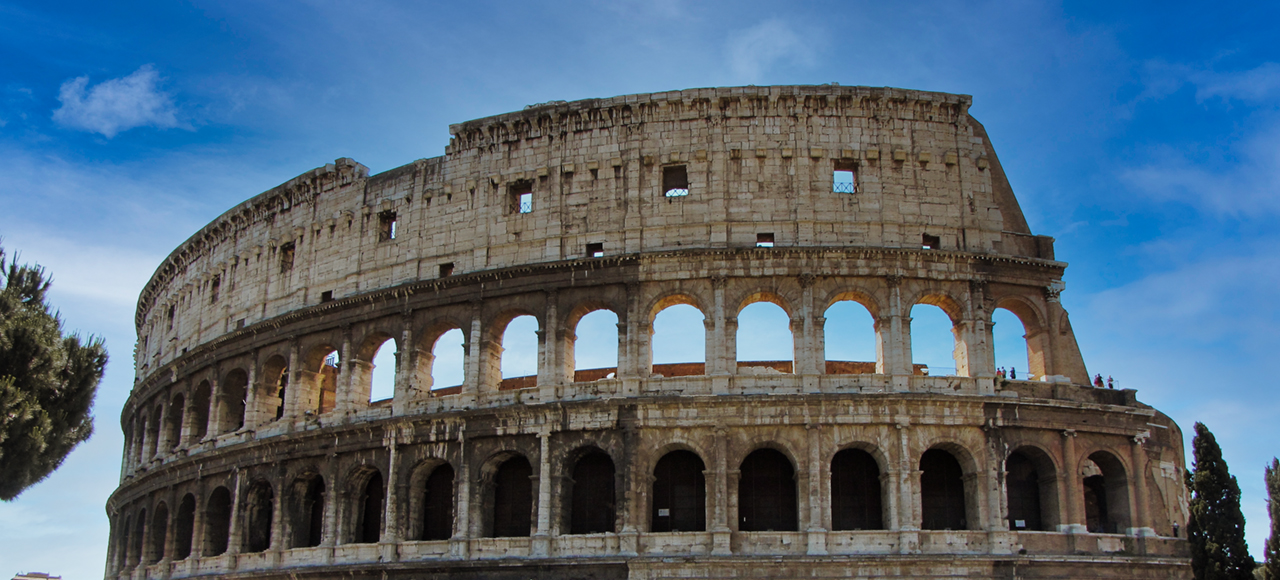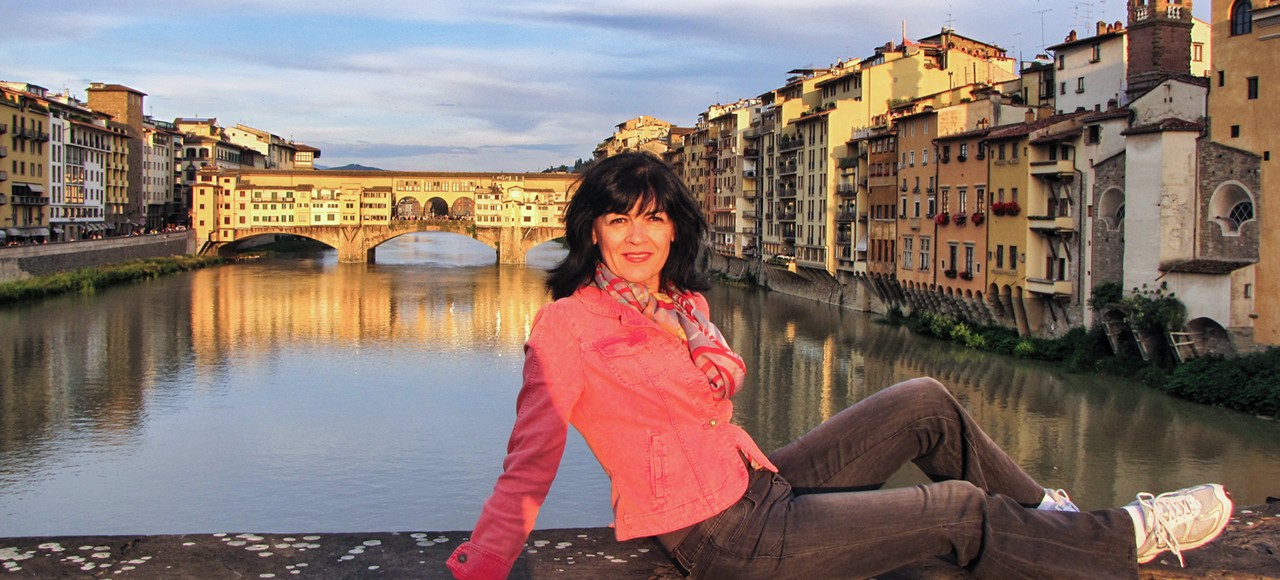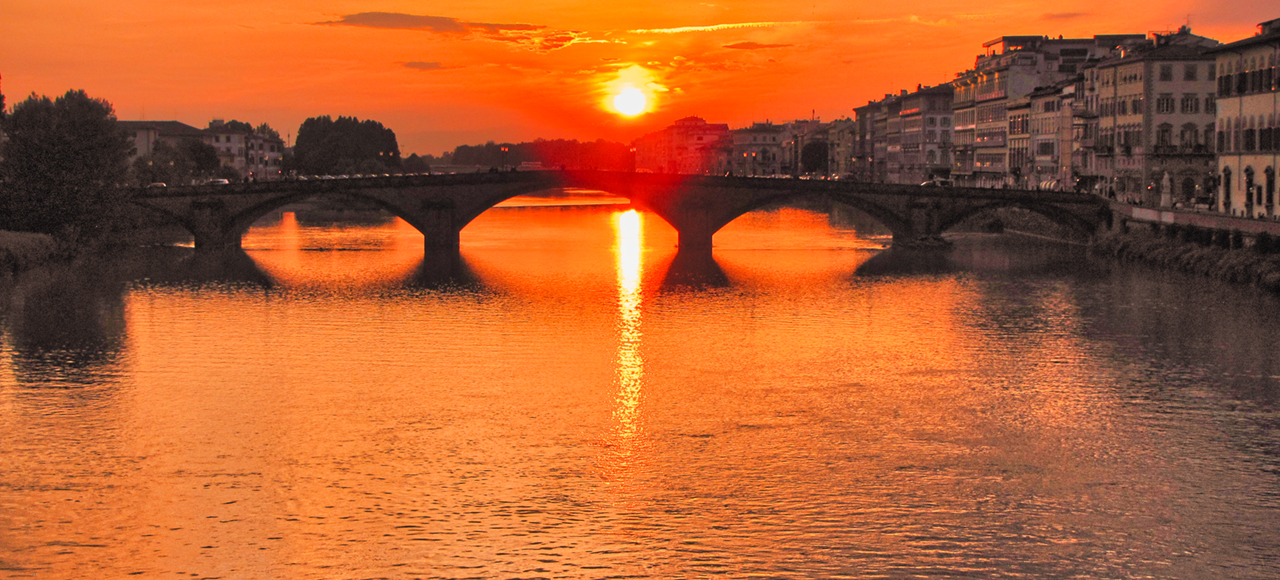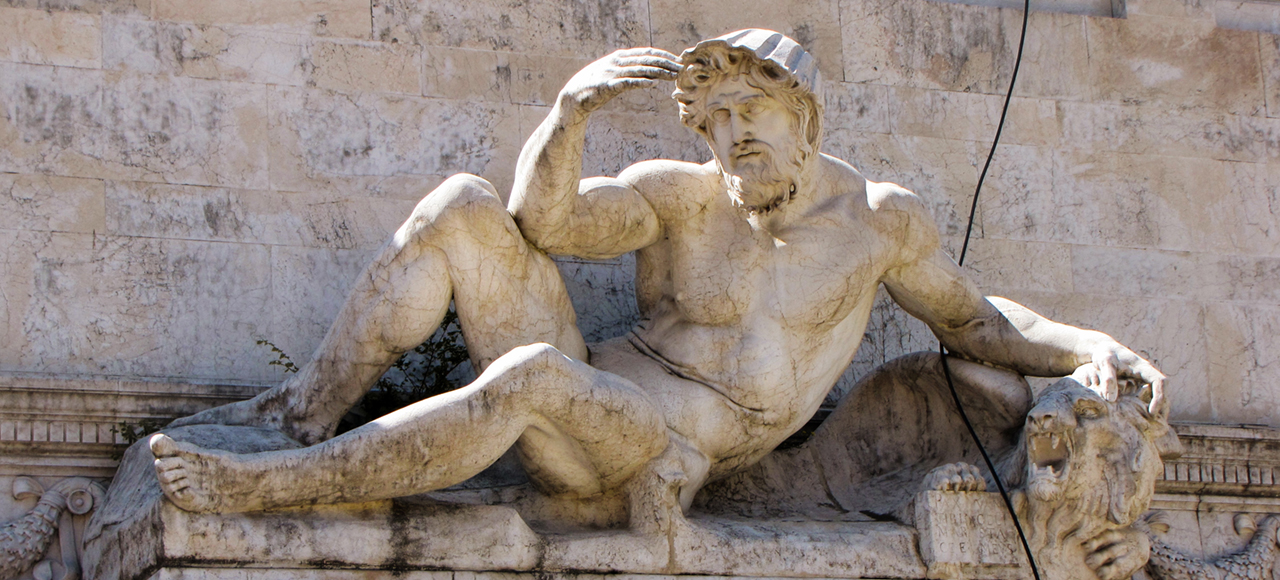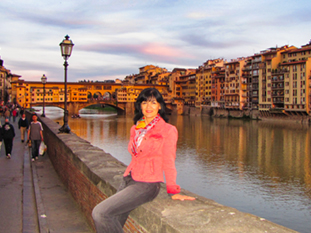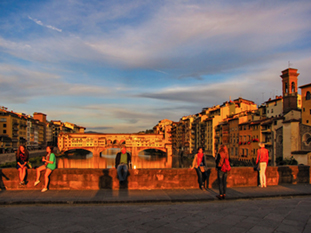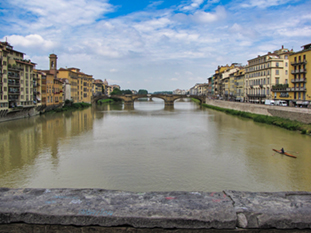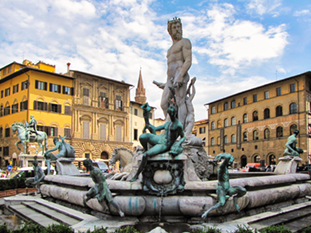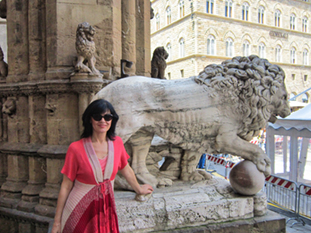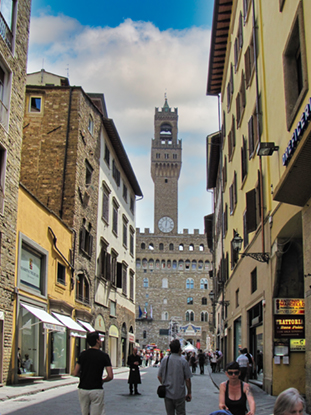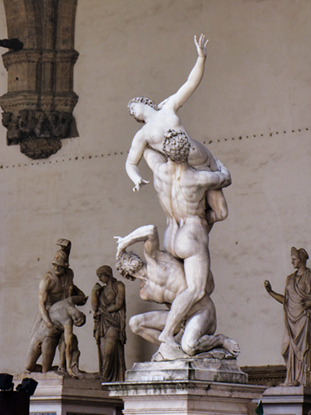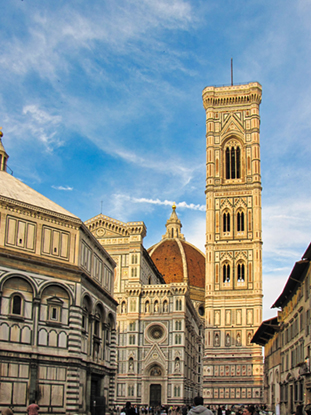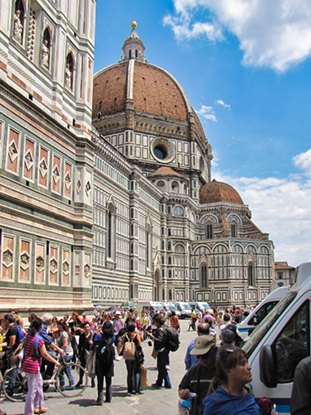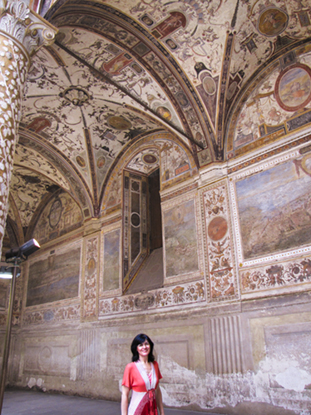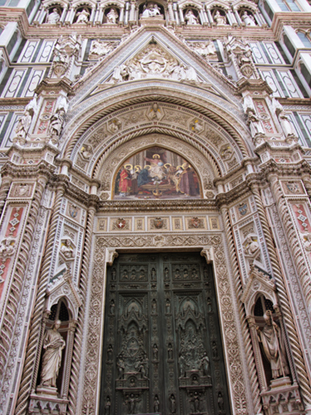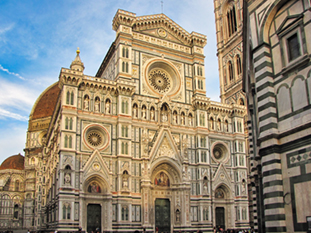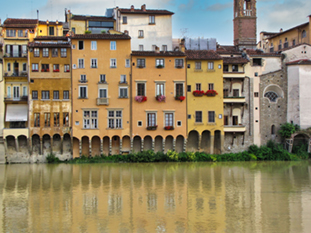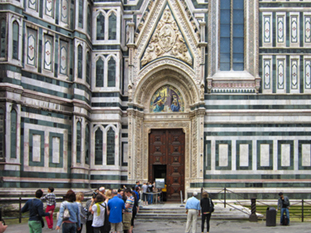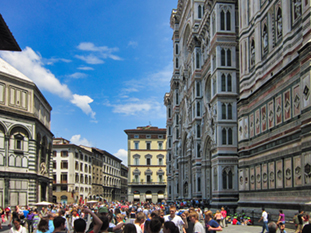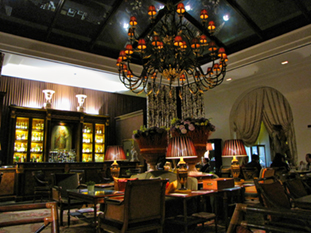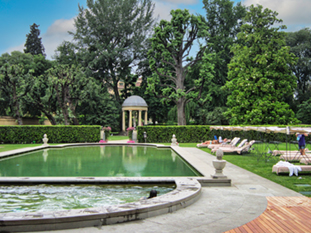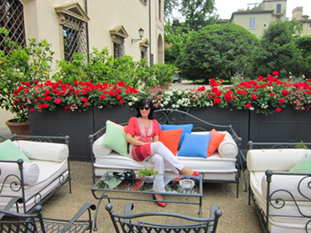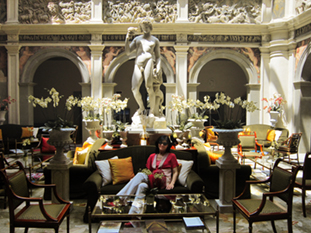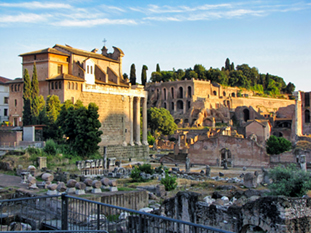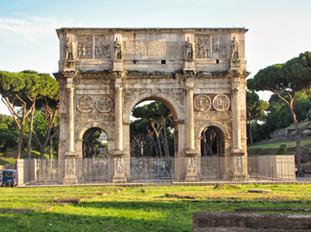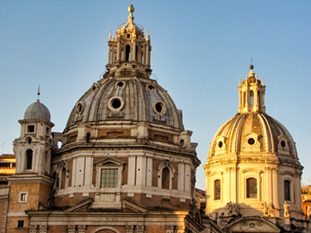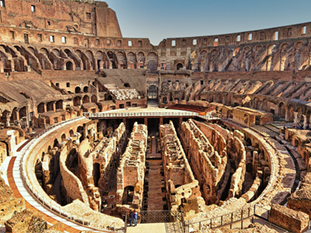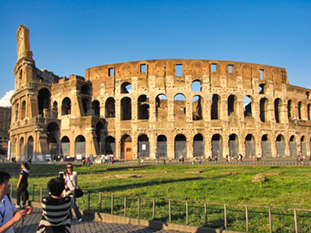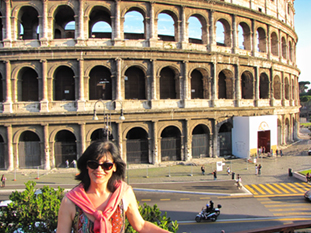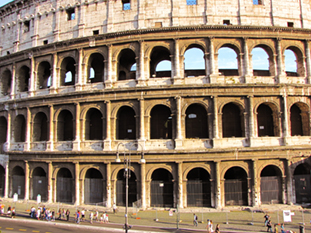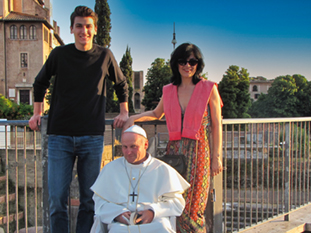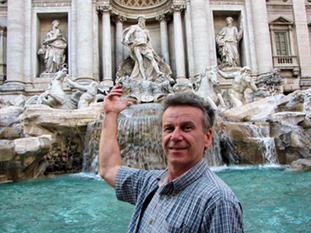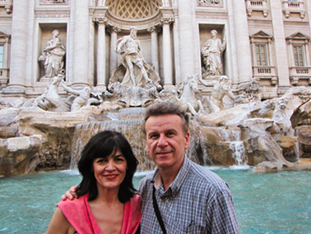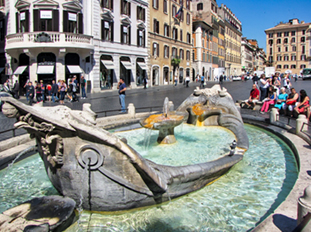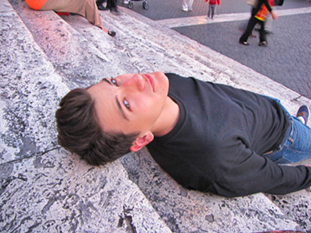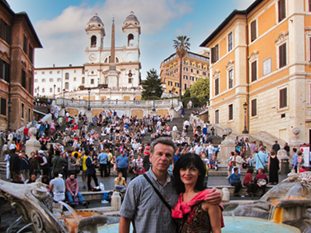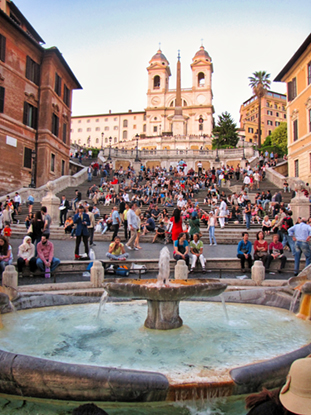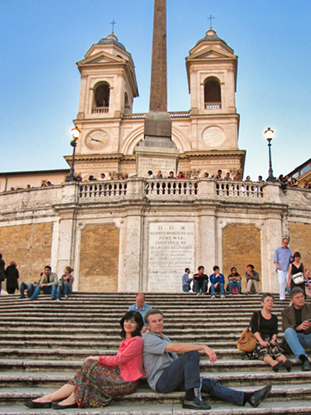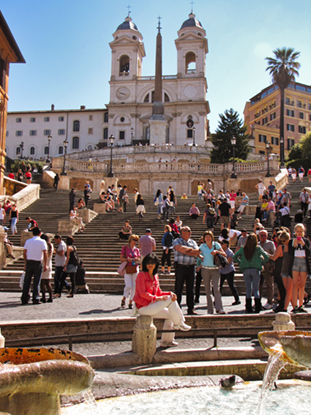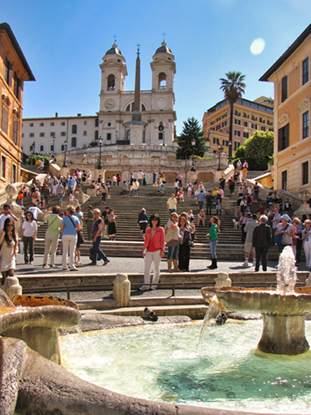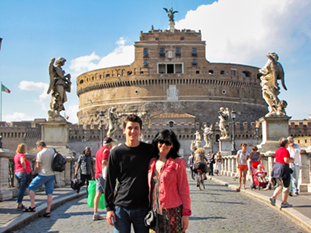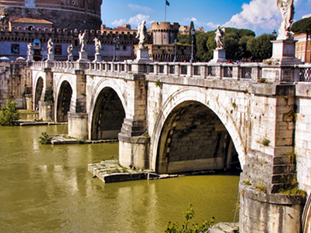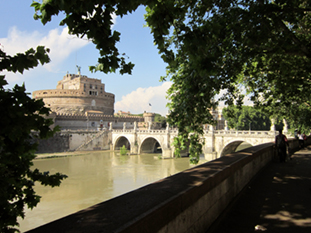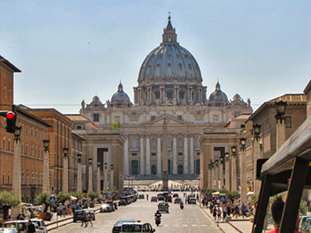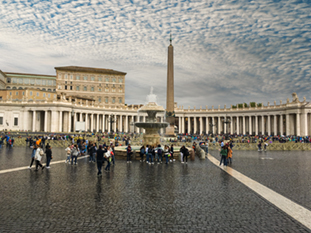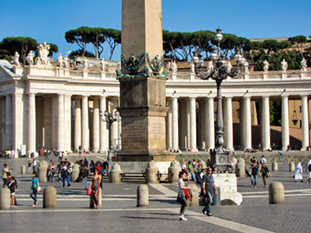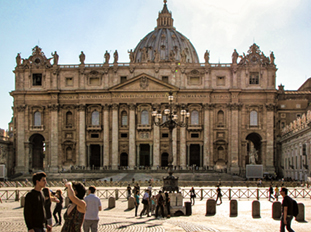
ITALY AS SEEN THROUGHT MY PICTURES
This page is the continuation of the first one related to Milan, Bergamo and Venice. It is dedicated to two famous, ancient cities in Italy and very well known around the world.
Please allow me to share our memories captured during visits to:
Florence & Rome
Florence
...capital of Italy’s Tuscany region, is home to many masterpieces of Renaissance art and architecture. One of its most iconic sights is the Duomo, a cathedral with a terracotta tiled dome engineered by Brunelleschi and a bell tower by Giotto. The Galleria dell’Accademia displays Michelangelo’s “David” sculpture. The Uffizi Gallery exhibits Botticelli’s “The Birth of Venus” and da Vinci’s “Annunciation.”
The City of Florence is divided in two by the river Arno, but its charming bridges give it a harmonious sense of continuity between the two sides. All of Florence’s bridges share centuries of history. The oldest and most famous is certainly Ponte Vecchio, mentioned by author Dan Brown in his novel Inferno. However, the other bridges are also important and noteworthy, given their stories, particularities, and that they have become real monuments.
The Arno river flows through the city from the south, passing under Ponte San Niccolò, Ponte alle Grazie, characteristic Ponte Vecchio with its Vasari Corridor, Ponte Santa Trinita, Ponte alla Carraia, Ponte A. Vespucci, Ponte alla Vittoria, and finally saying farewell to Florence with Ponte all’Indiano.
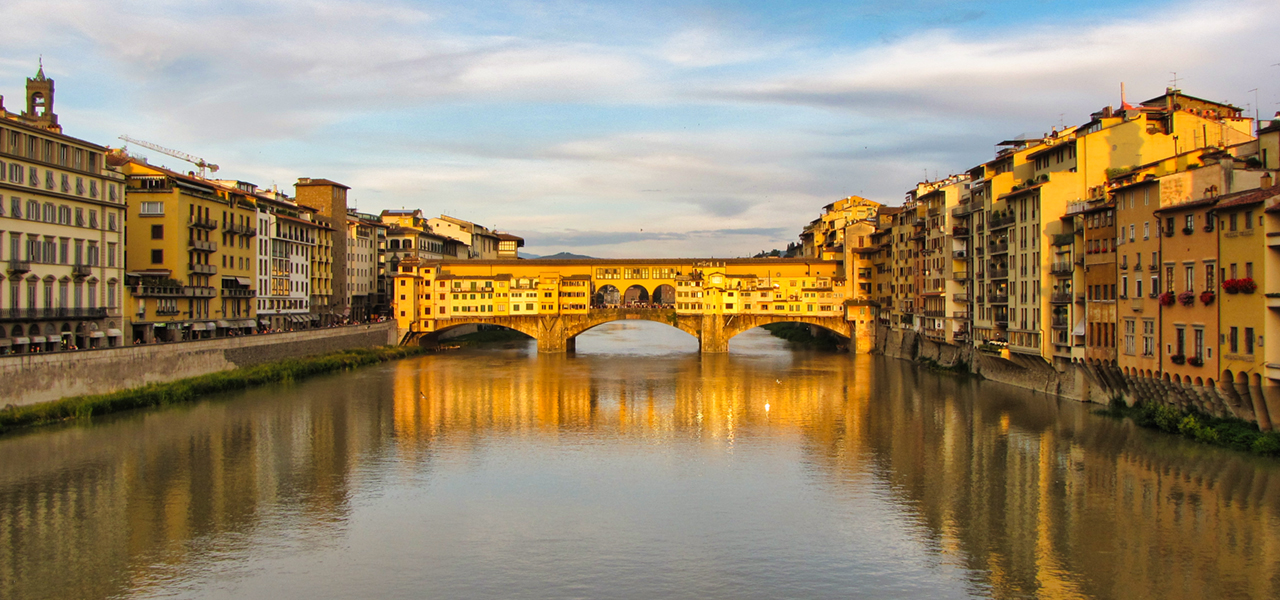
PONTE VECCHIO is the first and only bridge built during the Roman period, around the middle of the first century BC, and it is one of the symbols of Florence. It is the only bridge that was spared by the Germans in their retreat during the Second World War in 1944, and it attracts tourists from all over the world.
Florence was founded by the Romans in the first century B.C., and began its rebirth after the decadence of the barbaric ages, in the Carolingian period. It reached the highest top of civilization between the 11th and 15th centuries, as a free city.
The history of Florence is very rich and cannot be discribed in a few senteces; therefore for more details you can visit this site: About Florence...
Due to it’s strategical position, the role it played in the scope of the territorial organization in the region and commercial activity and trade, Florence was triggering a huge interest of different rulers through the time. Additionally, commercial activity and trade were influenced by the fact that important communication routes, land and water, intersected at Florentia increasing a presence of those oriental merchants, probably on their way from Pisa. The first introduces the cult of Isis and then, in the second century, Christianity.
As far as the art and culture goes, Florence contains an exceptional artistic patrimony, glorious testimony to its secular civilization. Here are some of famous people who lived here:
Cimabue and Giotto, the fathers of Italian painting along with Arnolfo and Andrea Pisano, reformists of architecture and sculpture;
Brunelleschi, Donatello and Masaccio, founders of the Renaissance;
Ghiberti and the Della Robbia; Filippo Lippi and l’Angelico; Botticelli and Paolo Uccello; the universal geniuses;
Not to mentione, Leonardo da Vinci and Michelangelo and their works, along with those of many generations of artists up to the masters of the present century, are gathered in the city’s many museums.
Thanks to Dante, the Italian language was born here. You may find more details here: Famous people of Florence.
According to UNESCO, almost a third of the world’s art treasures reside in Florence.
It's fair to say that Florence’s economy in the new Millenium is as strong as ever. The local economy is supported by tourism, industries such as textile, metalwork, pharmaceuticals, glass and ceramics, and chemistry and on Florentine craft such as jewelry and embroidery.
Chianti area is close enough to Florence to make it the perfect addition to a holiday in the city. Chianti Classico is a dry, red wine made only in this specific part of Tuscany which is also, one of the most beautiful countrysides in Italy and famous wine production area.

There are plenty of hotels and other affordable accommodation options in Florence. Luckily, we were able to get a room in the incredible Four Seasons hotel just a few blocks from the center of Florence.
As always, we are thankful for this opportunity and just want to share a few photos of this beautiful property.
Rome, the Eternal City
...is founded on on 7 hills: Aventine Hill; Caelian Hill; Capitoline Hill; Esquiline Hill; Palatine Hill; Quirinal Hill and Viminal Hill. According to legend, Palatine hill is the original hill on which Rome was founded.
Rome is famous for the Colosseum, the Roman Forum, and a sprawling metropolis of Classical architecture. But the city is known for more than its ancient history: it is home to the Spanish Steps, the Trevi Fountain, incredible food, gardens and art, and a world-famous film industry.
The Romans had built a road network of 53,000 miles by the early fourth century. Each Roman mile was about 4,800 feet and marked by a milestone, giving birth to the saying “All roads lead to Rome.”
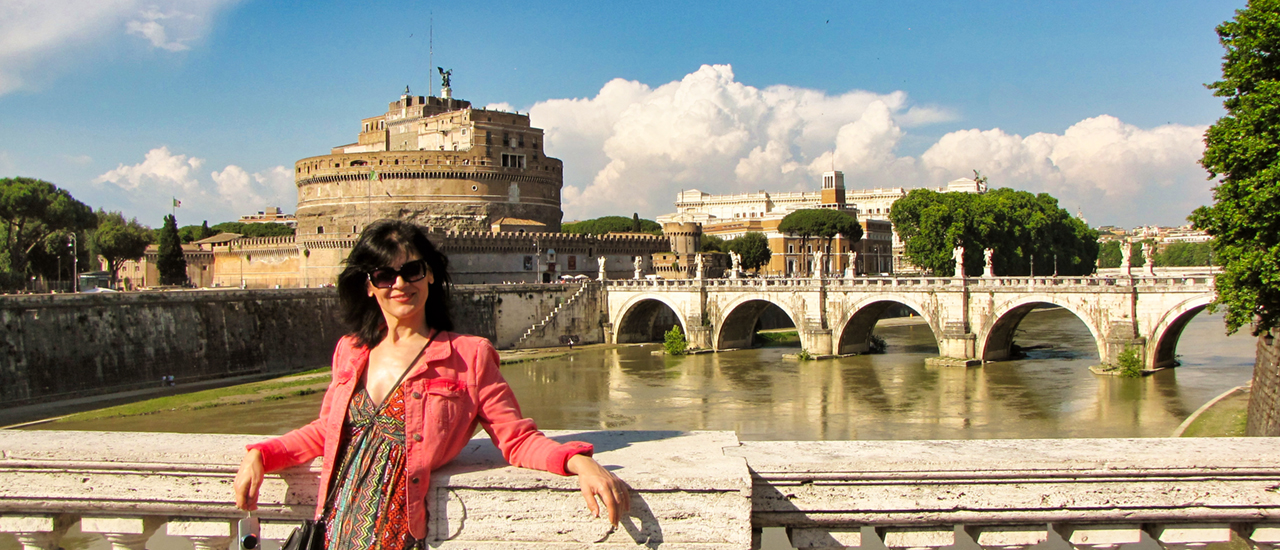
The Castel Sant’Angelo in Rome
Per the legend, Rome was founded in 753 BC by Romulus after he killed his brother Remus. Romulus became the source of the city’s name. However, the other legend, recorded by Greek historian Dionysius of Halicarnassus, says that Prince Aeneas led a group of Trojans on a sea voyage to found a new Troy, since the original was destroyed at the end of the Trojan War. After a long time in rough seas, they landed on the banks of the Tiber River. One of women, named Roma traveling with them, didn't want to leave and she ended up burning all of their ships. At first, the men were angry with Roma, but they soon realized that they were in the ideal place to settle. They named the settlement after Roma.
The Roman history is so huge and cannot be discribed in a few words, therefore the focus of this page will be on a few of the most important monuments captured by cameras during our visit to Rome. We stayed in the center of the city where The Roman Forum, the Colosseum, Trevi Fountain, Spanish steps, the Castel Sant’Angelo and Vatican city were within a walking distance.
Modern Rome has 280 fountains and more than 900 churches and not to mentione many other monuments and Roman ruins. What we see today is not how the ancient Rome looked like.
The Roman Forum
..is also known by its Latin name Forum Romanum, is a rectangular forum surrounded by the ruins of several important ancient government buildings at the center of the city of Rome. Citizens of the ancient city referred to this space, originally a marketplace, as the Forum Magnum, or simply the Forum
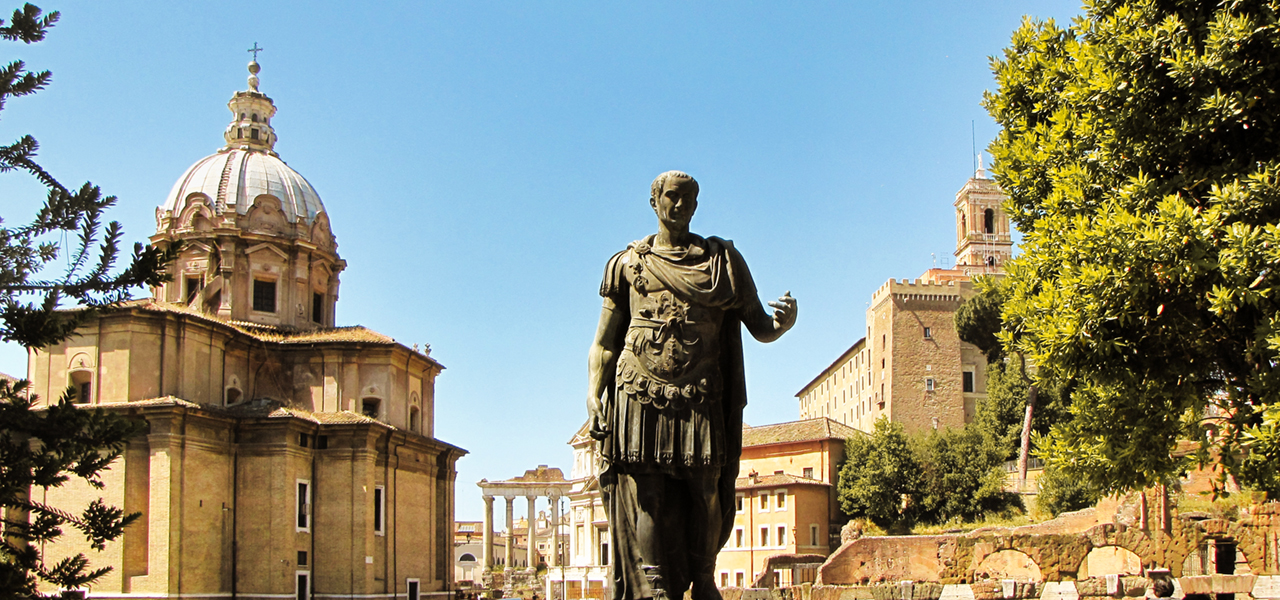
The Colosseum
...is an oval amphitheatre in the centre of the city of Rome, Italy, just east of the Roman Forum. It is the largest ancient amphitheatre ever built, and is still the largest standing amphitheatre in the world today, despite its age.
The Colosseum is built of travertine limestone, tuff (volcanic rock), and brick-faced concrete. The Colosseum could hold an estimated 50,000 to 80,000 spectators at various points in its history having an average audience of some 65,000; it was used for gladiatorial contests and public spectacles including animal hunts, executions, re-enactments of famous battles, and dramas based on Roman mythology, and briefly mock sea battles. The building ceased to be used for entertainment in the early medieval era. It was later reused for such purposes as housing, workshops, quarters for a religious order, a fortress, a quarry, and a Christian shrine.
Today, the Colosseum is a major tourist attraction in Rome with thousands of tourists each year entering to view the interior arena. There is now a museum dedicated to Eros in the upper floor of the outer wall of the building. Part of the arena floor has been re−floored. Beneath the Colosseum, a network of subterranean passageways once used to transport wild animals and gladiators to the arena opened to the public in summer 2010. The Colosseum is also the site of Roman Catholic ceremonies in the 20th and 21st centuries. For instance, Pope Benedict XVI led the Stations of the Cross called the Scriptural Way of the Cross (which calls for more meditation) at the Colosseum on Good Fridays.
Altare della Patria (Altar of the Fatherland)
The Victor Emmanuel II National Monument, also known as the Mole del Vittoriano or simply Vittoriano, is a national monument built in honour of Victor Emmanuel II, the first king of a unified Italy, located in Rome, Italy. It occupies a site between the Piazza Venezia and the Capitoline Hill.
The “Vittoriano” was built in a neoclassical style with techniques which were very advanced for its time. These techniques celebrate the grandeur of Rome, the elected legitimate capital of Italy, the unity of the country and the freedom of its people.
Overall, this monument is located in the city centre, close to the Roman Forum and the Colosseum and can be considered the most famous and representative monument of Roman history.

Trevi Fountain in Rome
There are more than 2000 fountains in Rome, but the most of them are small and known as “nasone”, translating to a big nose in Italian language. They were providing free drinking water to all Romans. However, the Trevi Fountain is very impressive and big. It is famous for trowing coins into water.
The legend said that if you trow a coin in the Trevi Fountain, you will return to Rome. If you throw 2 more coins, you will find love.
As the result, millions of tourists come here each year to throw coins. It is estimated that around 1.3 million Euros are tossed every year. The money is gathered every night by government workers and donated to Caritas, a nonprofit organization.
Spanish steps
The Spanish Steps are a set of steps in Rome, climbing a steep slope between the Piazza di Spagna at the base and Piazza Trinitá dei Monti, dominated by the Trinitá dei Monti church at the top. They are one of Rome’ most popular tourist sites.
There are total of 135 steps, designed by an Italian architect and funded by a French diplomat Etienne Gueffier. The Piazza di Spagna at the foot of the steps is named after the Spanish Embassy there, so the name simply extended to the steps, which were built in the 18th century to connect both the Embassy and the Trinita dei Monti church.
The fountain at the foot of the steps is called “Fontana della Barcaccia” or Fountain of the Ugly Boat. A city legend says the fountain was built on papal orders, inspired by a flood which carried a fishing boat all the way to the square.
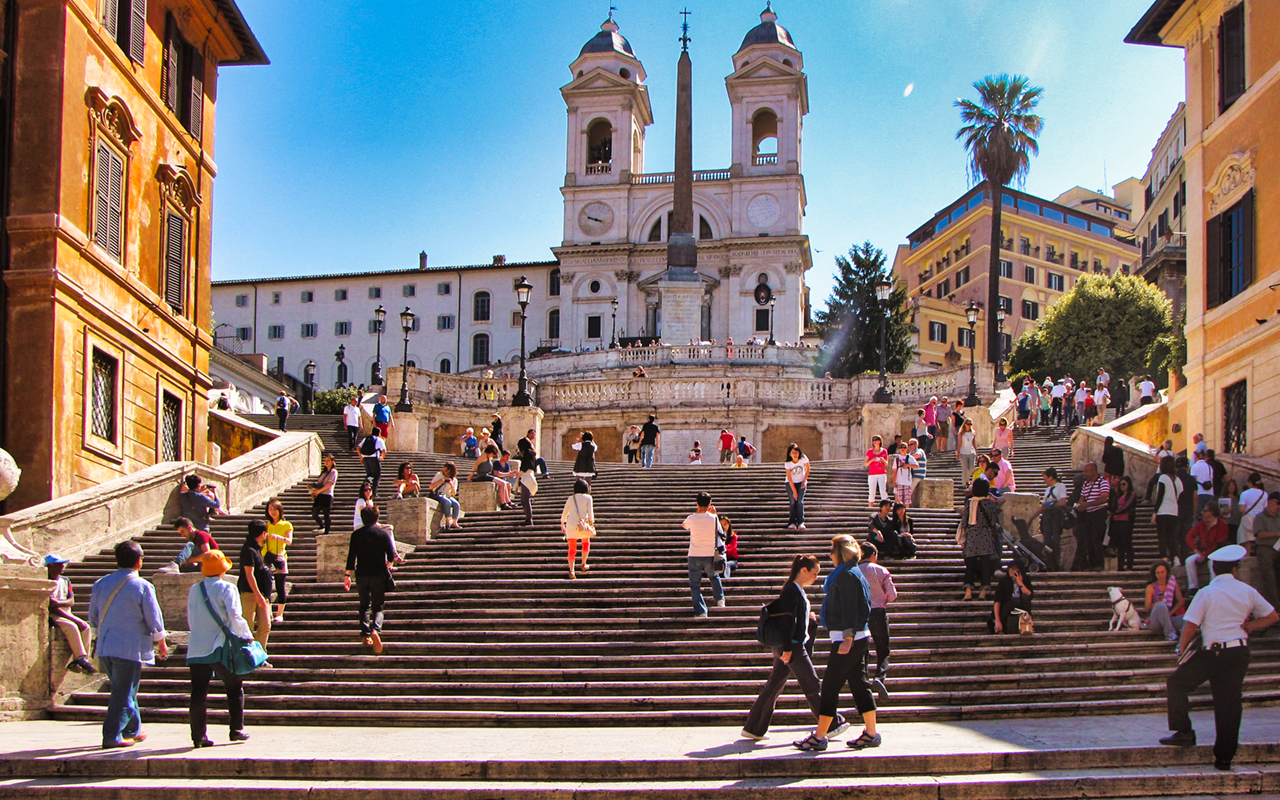
As you can see, when we have captured above images, tourists were sitting on Spanish steps, doing nothing and enjoying the ambient. However, just recently, that has been changed and sitting down on Rome’s Spanish Steps could now cost you $450.
The Castel Sant’Angelo
On the walking tour towards Vatican, you cannot miss the Mausoleum of Hadrian, usually known as Castel Sant’Angelo. It is a towering cylindrical building in Parco Adriano, Rome, and initially was commissioned by the Roman Emperor Hadrian as a mausoleum for himself and his family. The building was later used by the popes as a fortress and castle, and is now a museum. Aslo, today is known for a stunning monument with breath− taking views. It’ one of the best places to get a real understanding of Rome’s 2000 year old history.
Vatican City
Vatican City, a city−state surrounded by Rome, Italy, is the headquarters of the Roman Catholic Church. It’s home to the Pope and a trove of iconic art and architecture. Its Vatican Museums house ancient Roman sculptures such as the famed “Laocoön and His Sons” as well as Renaissance frescoes in the Raphael Rooms and the Sistine Chapel, famous for Michelangelo’s ceiling.
Up until 1871, Italy was divided into many separate states. One of these states was the Papal lands which covered around one-third of Italy and was ruled by the Pope. When Italy became one unified country, the Pope lost a great deal of territory and power. ... This is why the Vatican is a country today.
As there are no hospitals in the Vatican State, virtually no one is born in there. Instead, Vatican citizenship is provided on a “jus officii” basis. This means someone is made a citizen of the Vatican when they are appointed to work in the Holy See.

Besides being a home for the Pope and some truly breath-taking architecture, there are plenty more things to this place. Based on the Gray Line Rome blog published in June, 2017:
♦ It’s the smallest country in the world, but it also attracts aroun 6 milion tourists each year;
♦ It is the only UNESCO world heritage country. Italy has more UNESCO world heritage sites than anywhere else in the world, but the Vatican is the only country to be entirely designated as a world heritage site.
♦ There’s an ATM with instructions in Latin. Belonging to the Vatican bank, this has to be the only ATM with Latin instructions in the world.
♦ It has its own army 135 people stong, known officially as the Pontifical Swiss Guard. They were a uniform that looks like it hasn’t been changed since the Renaissance, but they do have modern military training too.
♦ It has its own football team consists entirely of employees of the tiny country. Their team color is yellow, blue and white.
♦ It has the world’s shortest railway. With just two 300-metre tracks and one station, the Vatican’s railway network is the shortest in the world. It’s used for importing goods and for ceremonial purposes and there are no regular passenger trains scheduled.
At the end of this chapter what to say about Italy, Rome, Florence? There are not enough words to explain deepenes of all of them and and not everything can be captured by cameras. It is worth a visit in person.
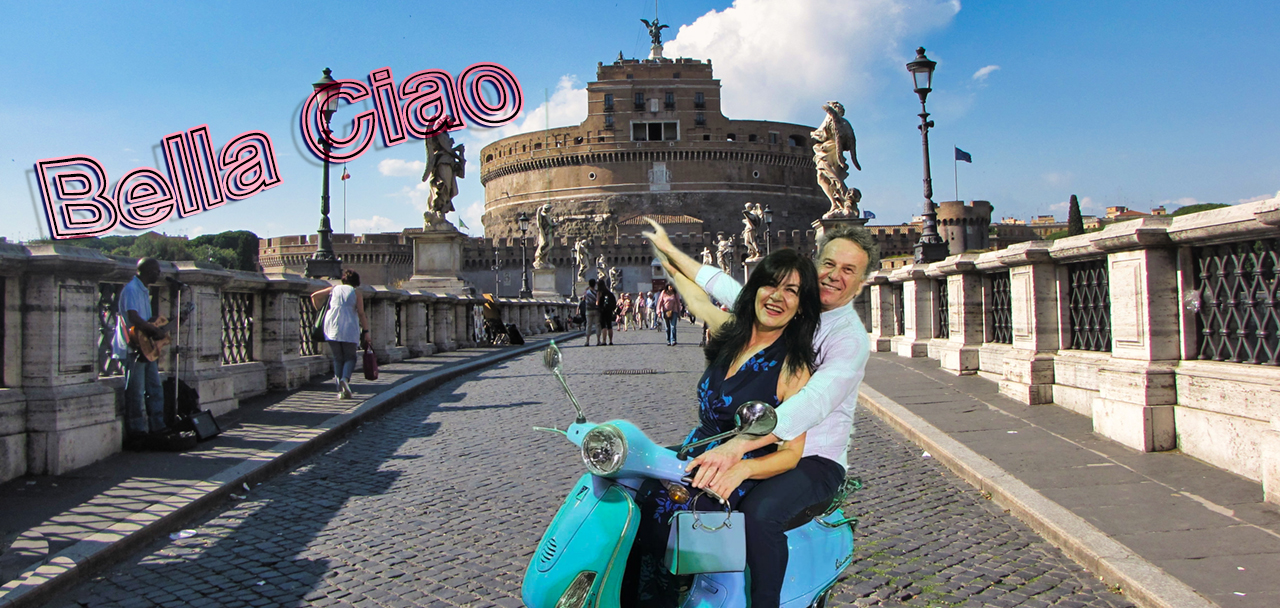
Next page: Amalfi Coast
